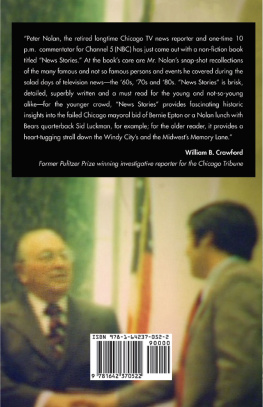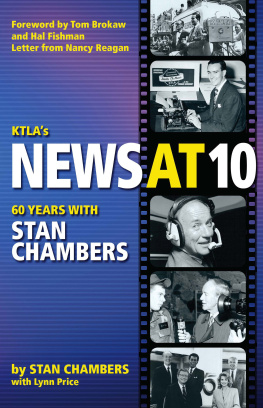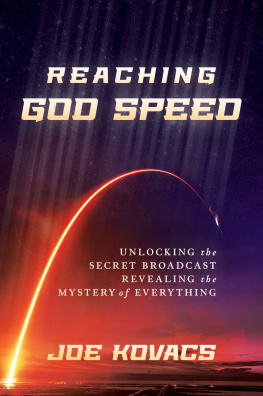
Thank you for purchasing this Simon & Schuster eBook.
Join our mailing list and get updates on new releases, deals, bonus content and other great books from Simon & Schuster.
C LICK H ERE T O S IGN U P
or visit us online to sign up at
eBookNews.SimonandSchuster.com

CONTENTS
For Frank Stanton and William S. Paley, who built it
PREFACE
November 7, 2004, marks 50 years since Face the Nations first broadcast.

Colin Powell and John McCain often crossed paths in Face the Nation s corridors during the Iraq War. (Karin CooperPolaris Images for CBS)
When I was offered the job of moderating Face the Nation in 1991, I already had plenty to occupy my time. I covered Congress during the week, and each Saturday I flew to New York to anchor the CBS Saturday Evening News . But I couldnt turn down Face the Nation, the job I had always wanted. From the time I wrote my first story and saw my byline atop it in my junior high school newspaper, I had always wanted to be a reporter, and I got into journalism to satisfy my own curiosity. I liked to see things for myself and talk to key newsmakers. How could I turn down Face the Nation ? I not only got to interview the top newsmakers, I didnt even have to go to themthey came to me. That has to be the best deal in all of journalism.
Ive since retired from the Saturday anchor job and I no longer cover Congresss day-to-day activities, but I have never regretted the decision to join Face the Nation. I cant think of anything I would rather do.
Sunday mornings are a different time on television. The food fights and the shouting matches that mark the prime-time cable programs are rare occurrences on Face the Nation. We have learned that our viewers are more interested in content than how loud someone can speak, and that is what we try to provideserious discussion and analysis and no sound effects. The evening news programs bring a comprehensive digest of the days news, but time constraints limit them to just thatbeing a digest. On Sunday mornings, there is time for longer discussions.

Frequent guests over the years: Senators Richard Lugar and Joe Biden, seen here in 1985.

John Kerry and John McCain together on the show in 1985.
Face the Nation and the other Sunday programs have never attracted huge audiences by prime-time standards. It has always been whonot how manywatched our broadcast that has counted. Sunday mornings may be staid, even old-fashioned, but it is a time when those who shape opinion and make policy watch and listen to each other.
The topics that are discussed on Face the Nation often become the subject that official Washington chews over for the rest of the week, and the competition among the three networks to get the key guest of the week can be fierce. Over the years, there have been attempts to change the broadcast, but 50 years after that first broadcast in 1954, it remains what it was envisioned to be in the beginning: a no-nonsense live interview with someone involved in the weeks most important story.
I am not a dispassionate observer. Being the moderator of Face the Nation is the best job I ever had. I love the broadcast, and I am proud of what it has come to represent. But as I have combed through hundreds upon hundreds of transcripts of the programs that have been broadcast over these past 50 years and watched the videotapes of many them, I have come to have a new appreciation of the broadcast. Face the Nation evolved into more than a venerable television show. It has become a window on history. Many of those moments have been captured on the DVD that accompanies this book. To see and hear them live is a powerful, moving experience.

One-time heavyweight champion of the world Riddick Bowe with Bob Schieffer on February 2, 1997, when Bowe decided to enlist in the Marines.
I realized that in many cases, the stories behind the storiesthe sometimes funny, sometimes hair-raising adventures of the producers and correspondents who tracked down the people who were interviewed on the broadcastwere as interesting as what appeared on television.
Those are the stories I tell in this book. My hope is that the millions of loyal viewers who have made Face the Nation a part of their Sundays for so many years will find them as interesting as I did.
April 30, 2004
Washington, D.C.
Part I

Window on History:
The Story of Face the Nation
1

In the Beginning
Stanton and Paley Invent CBS News
It is a marvelous and frightening instrument, broadcasting, as part of this marvelous and frightening century. But ordinary men must use it as ordinary men have made this century what it is. Bad men can use it to their advantage, but in free societies, only for a timeand a shorter time, I think, than in previous eras.
The cameras unblinking eye sees through character faster than the printed word.
Eric Sevareid on his retirement,
November 28, 1977
Face the Nation was Frank Stantons idea. Stanton always knew what he wantedand what CBS seemed to need. CBS News had more or less invented radio news during World War II, and Edward R. Murrows See It Now programs had set the standard for television documentaries. What CBS did not have in 1954, and what Stanton felt it needed, was something to compete with NBCs Meet the Press , a live interview program that had the habit of generating the news that wound up as headlines in newspapers on Monday morning.
Stanton had been known as the boy wonder of broadcasting. He was an obscure, 27-year-old psychology professor at Ohio State University when CBS founder William S. Paley discovered him in 1935. Ten years later, when Paley named him president of the network, some outside the industry would occasionally mistake him for an intern because of his youthful good looks. But that was a mistake only outsiders made. Insiders knew him as Paleys right-hand man, though a polar opposite of Paley.
Stanton was a workaholic before the term was coined. Unlike the flamboyant Paley, who traveled with the jet set of his day and spent much of the year at his homes around the world, Stanton usually worked seven days a week; he socialized with few people and never with Paley. He did not particularly like the CBS chairman. But together, it was Paley, the charming showman and salesman, and Stanton, the cold, cerebral loner, who built the broadcasting giant that became known as the Tiffany network.
It was Paleys network, but those on the inside knew it was Stantonas much as Paleywho had made it what it was. Don Hewitt, the 60 Minutes creator, told me about one night when he was being given one of the many awards that he received throughout his illustrious career.
Next page














